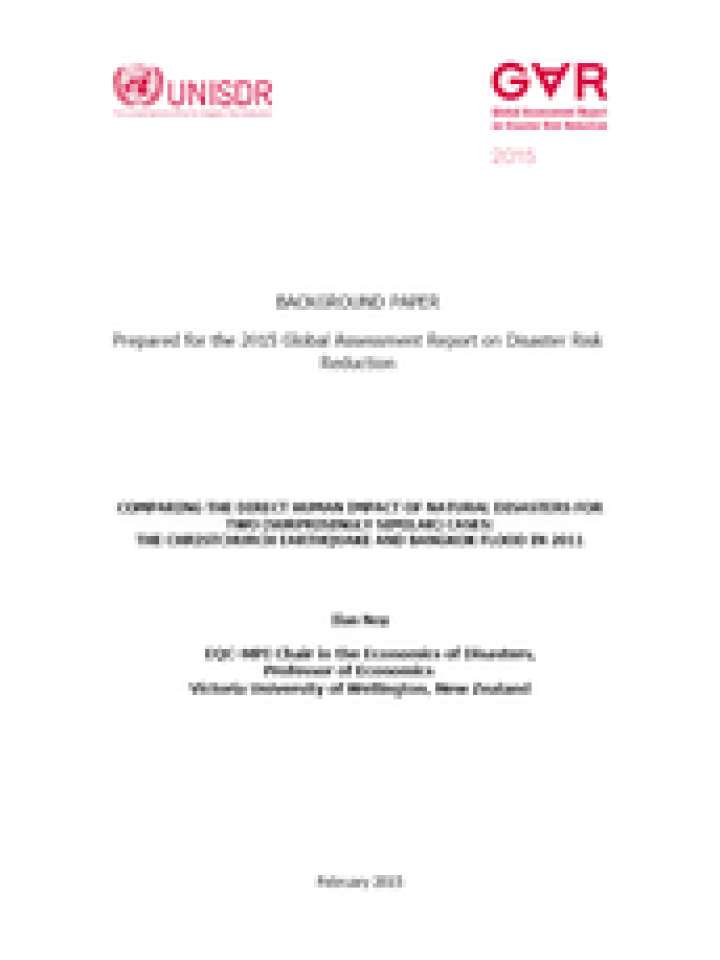Comparing the direct human impact of natural disasters for two cases: The Christchurch earthquake and Bangkok flood in 2011
This paper presents a novel way to aggregate separate measures of disaster impact and apply it to two recent catastrophic events: the Christchurch (New Zealand) earthquakes and the Greater Bangkok (Thailand) floods of 2011. It focuses exclusively on the direct impact of disasters.
Similar to the World Health Organization's calculation of Disability Adjusted Life Years (DALYs) lost from the burden of diseases and injuries, it allows to conclude that in per capita terms, both countries lost about 15 days per person due to the 2011 catastrophic events.
The proposed approach has the following benefits:
- emphasis on the loss of human potential associated with mortality;
- emphasis on the tangible impact on people who were affected by disasters;
- a full-information index, for specific disaster events, allows one to place a higher emphasis on the death of children and people with higher life expectancy;
- greater emphasis on the financial costs of disasters in lower income countries such as Thailand;
- the fact that any of these assumptions can easily be modified, depending on the ultimate aim of the data analysis.
This document is a background paper of the 2015 Global Assessment Report on Disaster Risk Reduction.
